The landscape is not static. It moves, it transforms, it breathes over time. What was once unexplored territory has become a home, a field of crops, a city, a network of circuits and screens. Each era shapes its own landscape, and in ours, technology is no longer just a tool: it is a new ecosystem, an extension of the natural.
In this process of metamorphosis, the relationship of human beings with their environment has changed dramatically. We went from inhabiting the world in symbiosis with nature to intervening in it, domesticating it, adapting it to our needs. And now, with technology, the landscape no longer only expands in physical space, but also in the digital dimension. We are at a point where the landscape is not only what we see, but what we navigate through the screen, what we create with data, what we experience in alternative realities.
This project arises from that transformation. "The Metamorphosis of Landscape" is a process in itself, where images of nature are absorbed by the machine, reinterpreted in virtual reality, and finally returned to matter through oil. Each work is the result of a journey: from the observation of the organic landscape, through its digital deconstruction, to its return to the physicality of painting.
It is not a simple translation between media, but a search for meaning in the transformation itself. How does our perception of the landscape change when we filter it through technology? What is lost and what is gained in this transition between the digital and the physical? Is it possible that the machine, in its attempt to imitate the natural, reveals to us a new way of understanding it?
Painting these landscapes is capturing an instant within a continuous cycle. I do not seek to replicate the real, but to reveal what technology adds, alters or suppresses. It is a dialogue between the human, the organic and the synthetic; between the past of landscape painting and the present of the digital image. It is, in essence, a reflection of our era: a moment of transition, an instant within the metamorphosis.
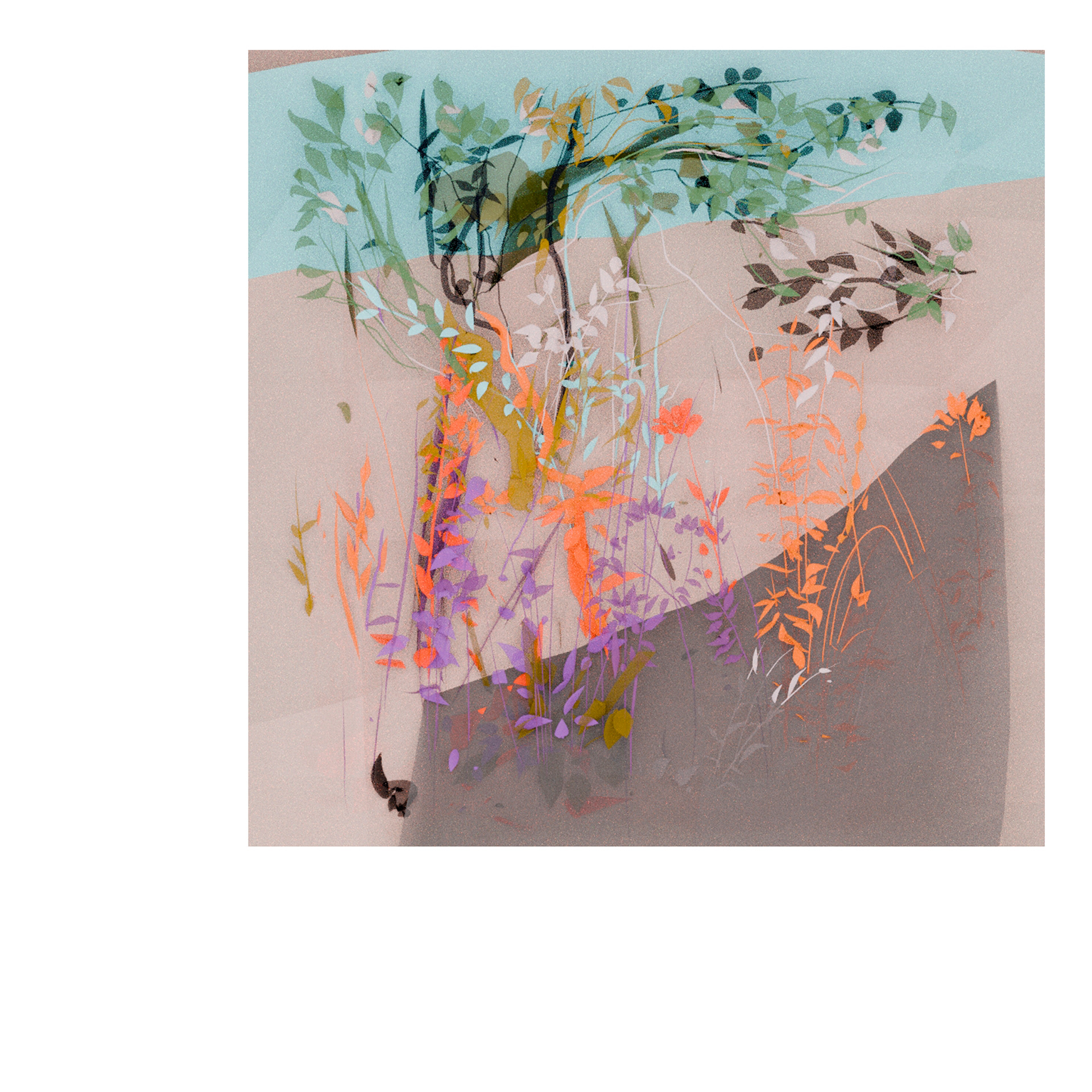
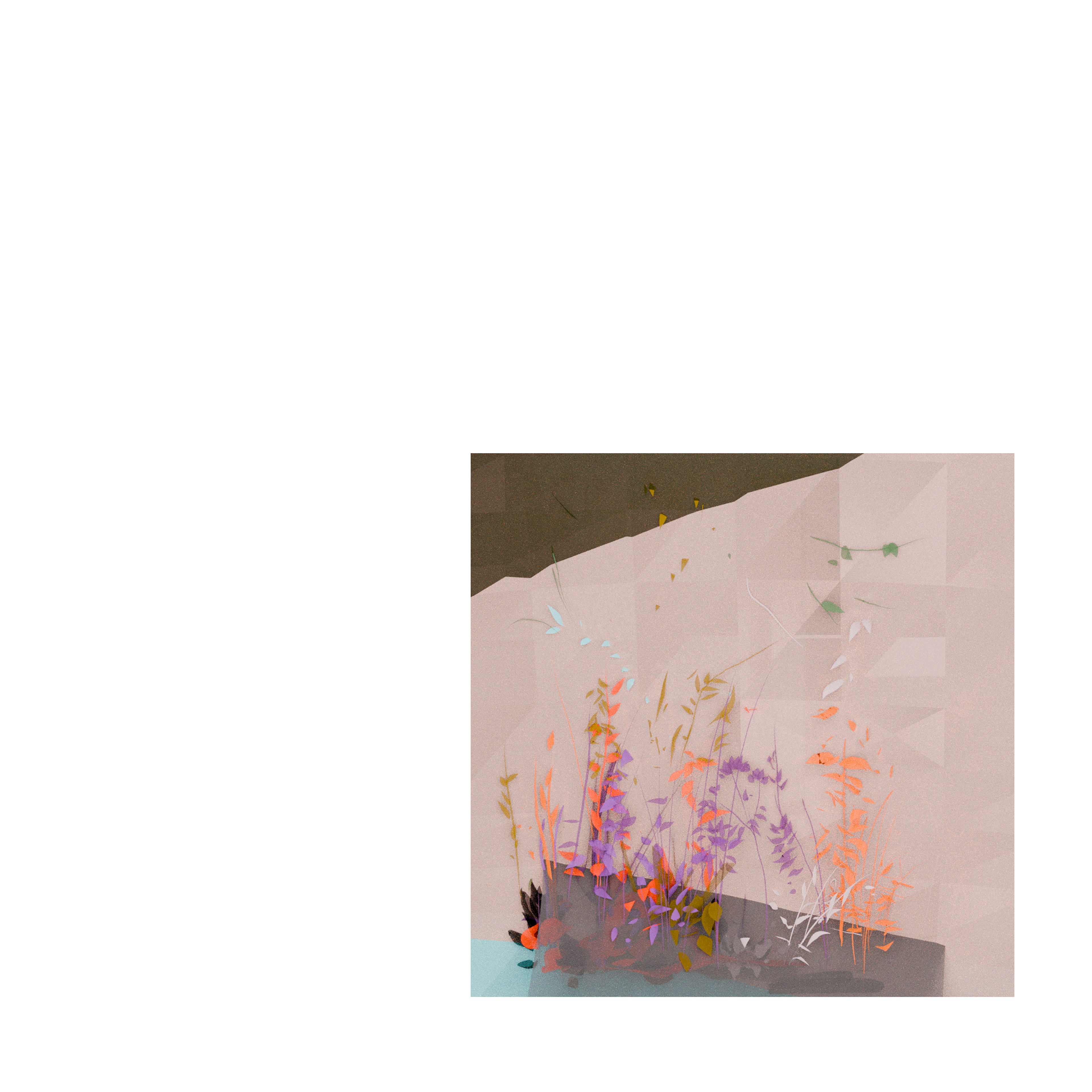
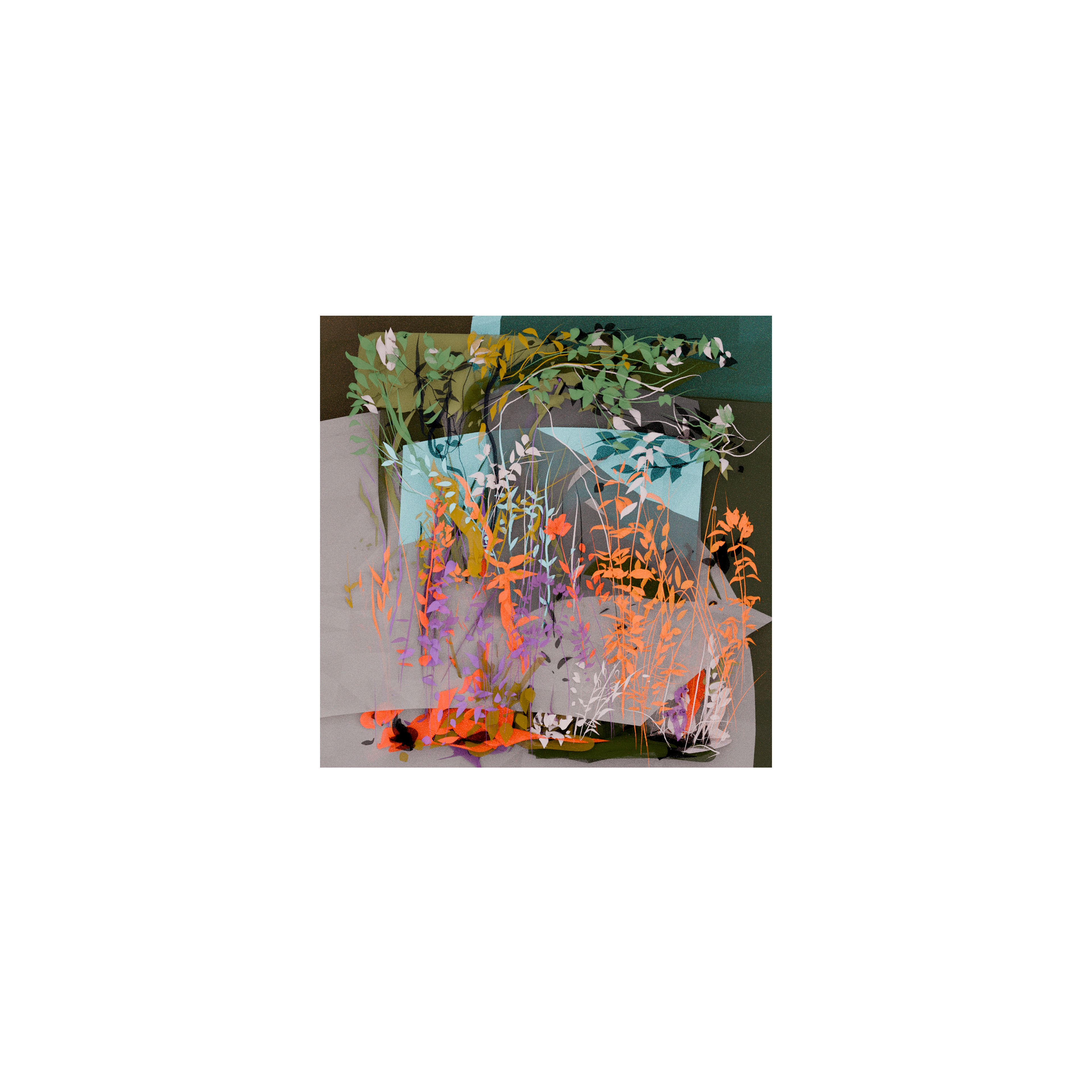
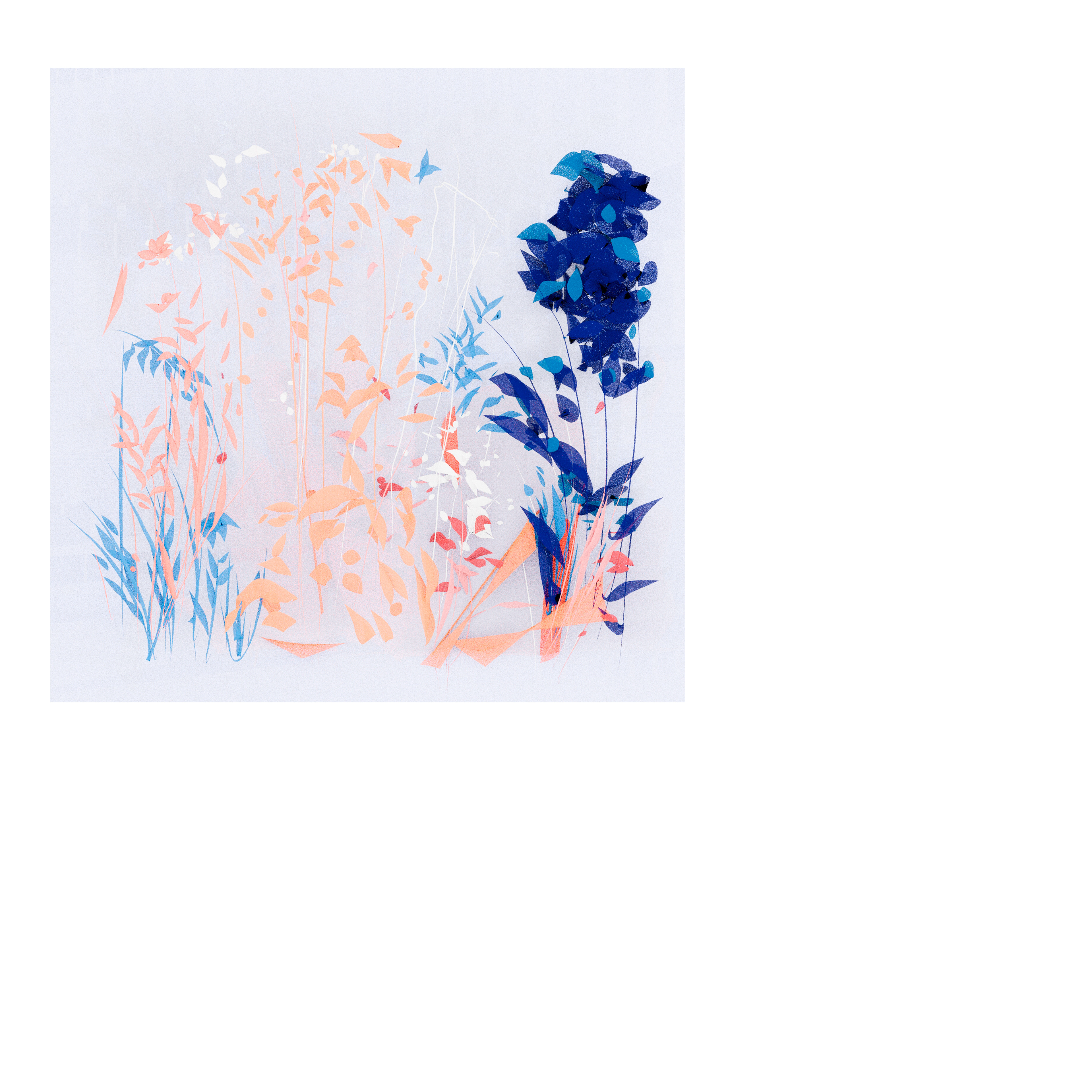
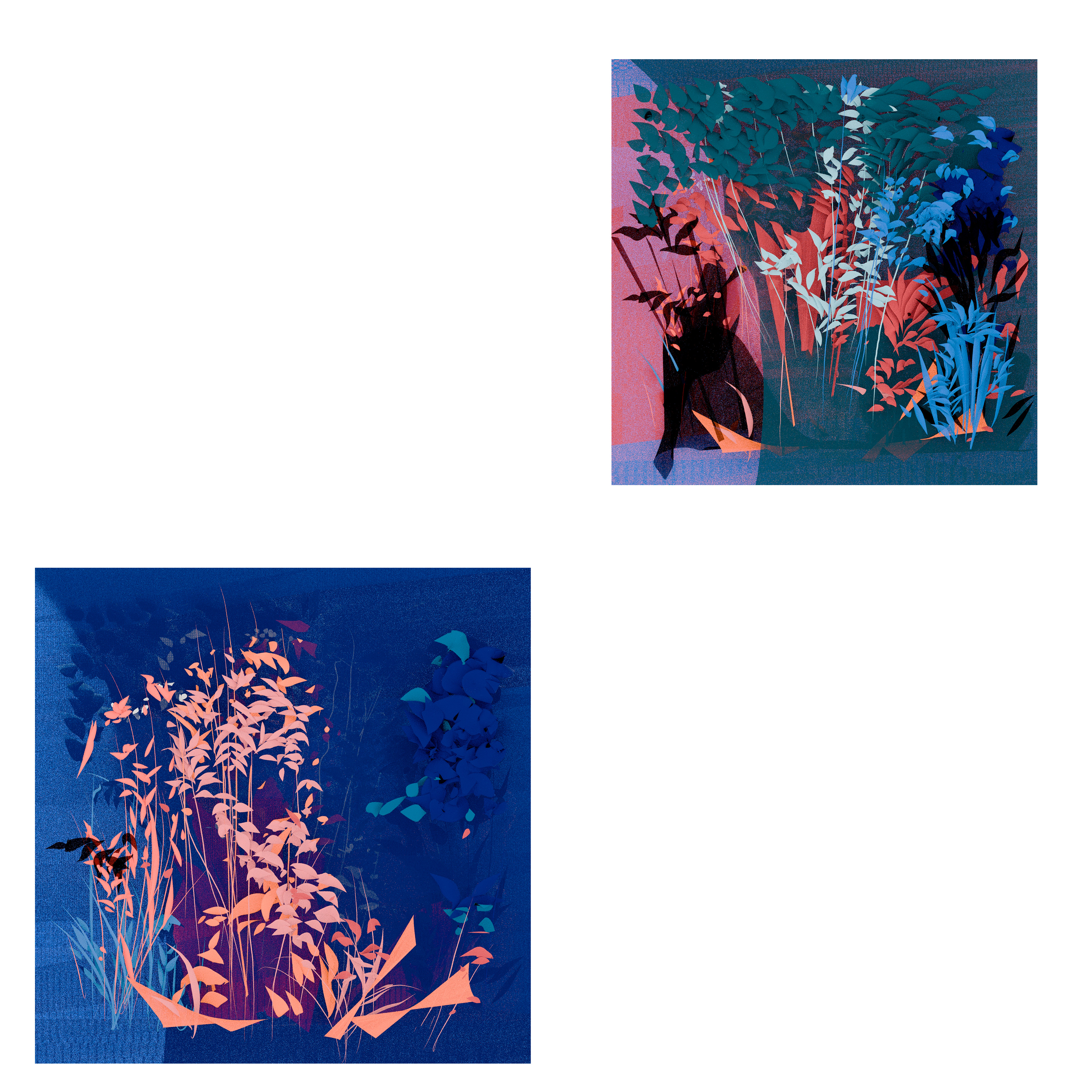
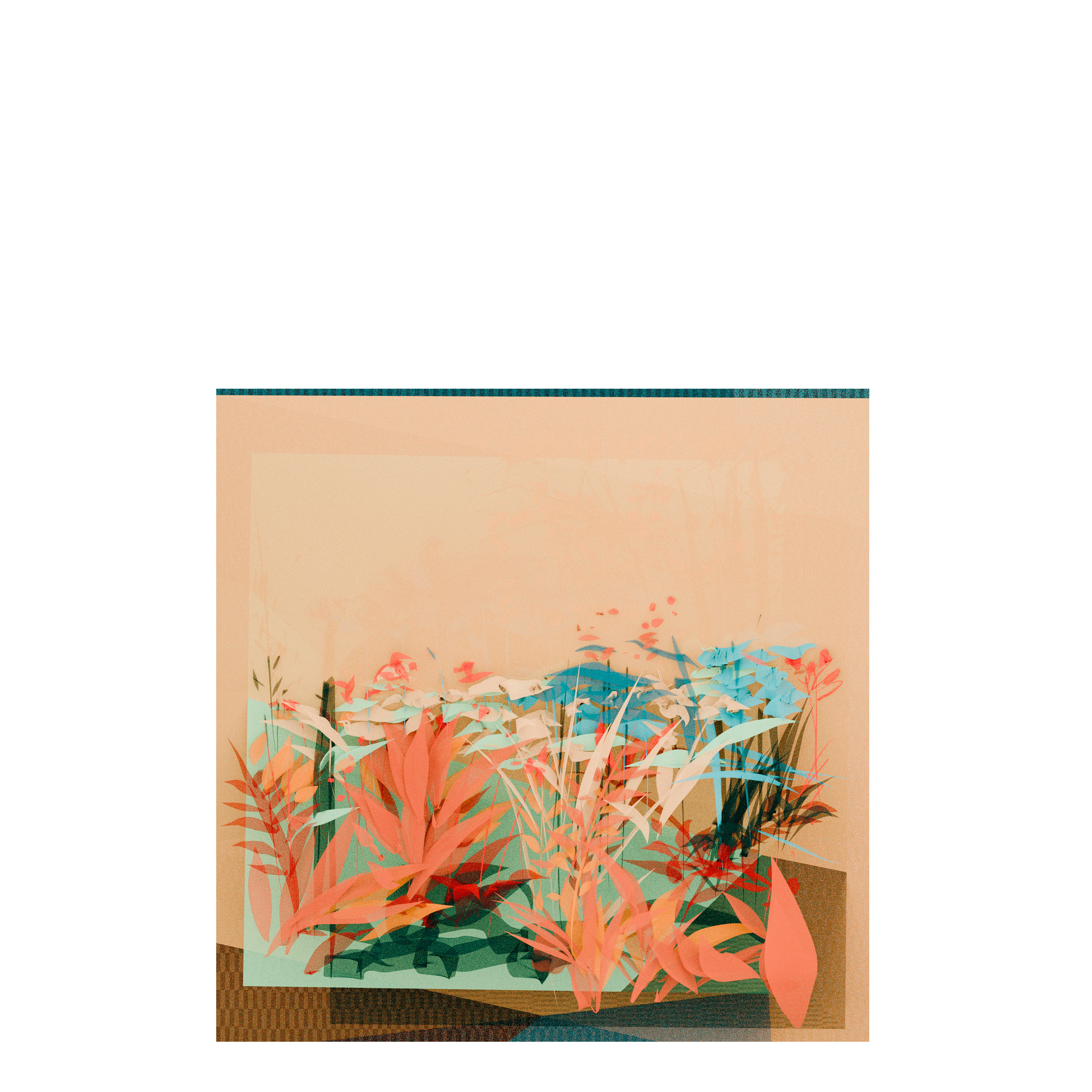
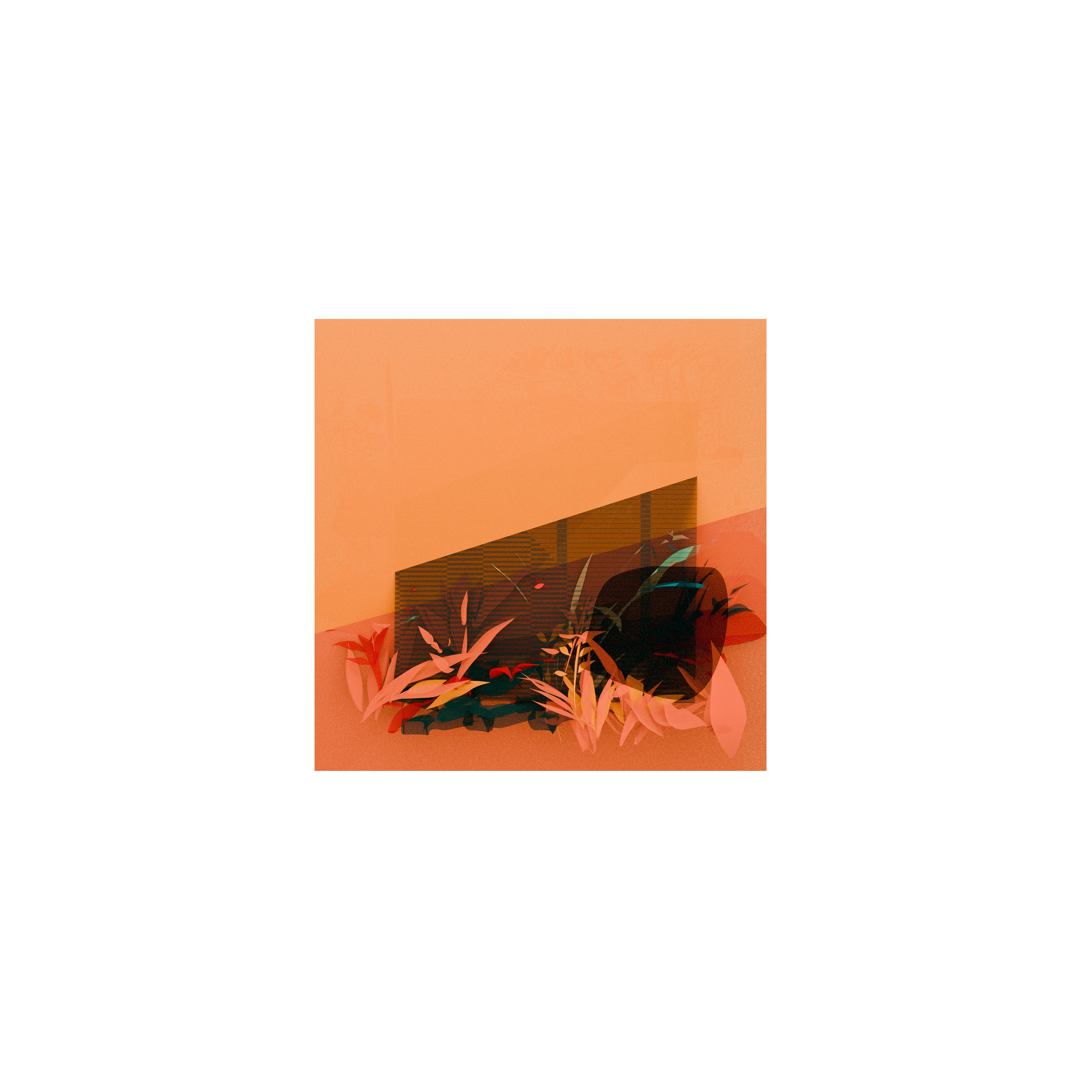
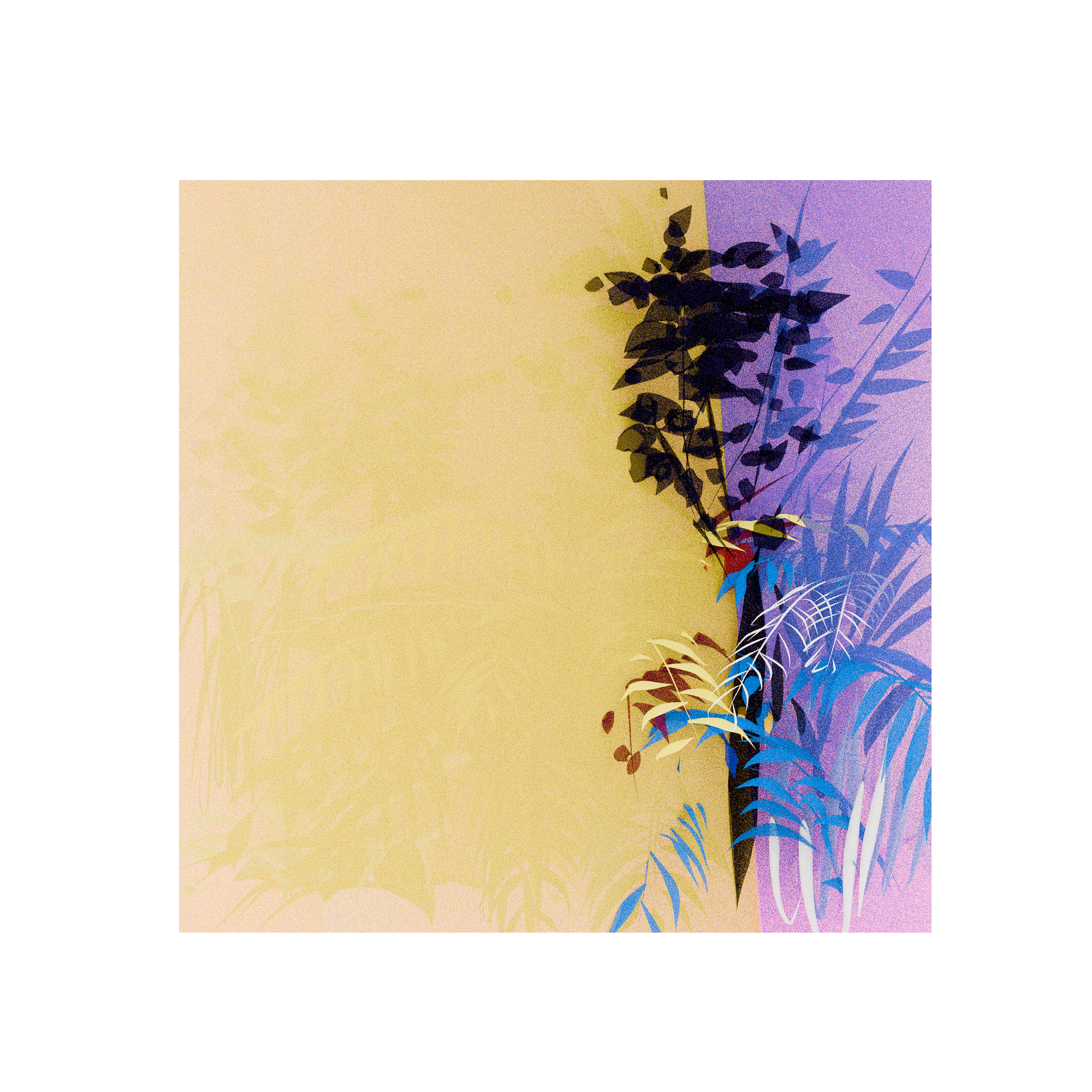
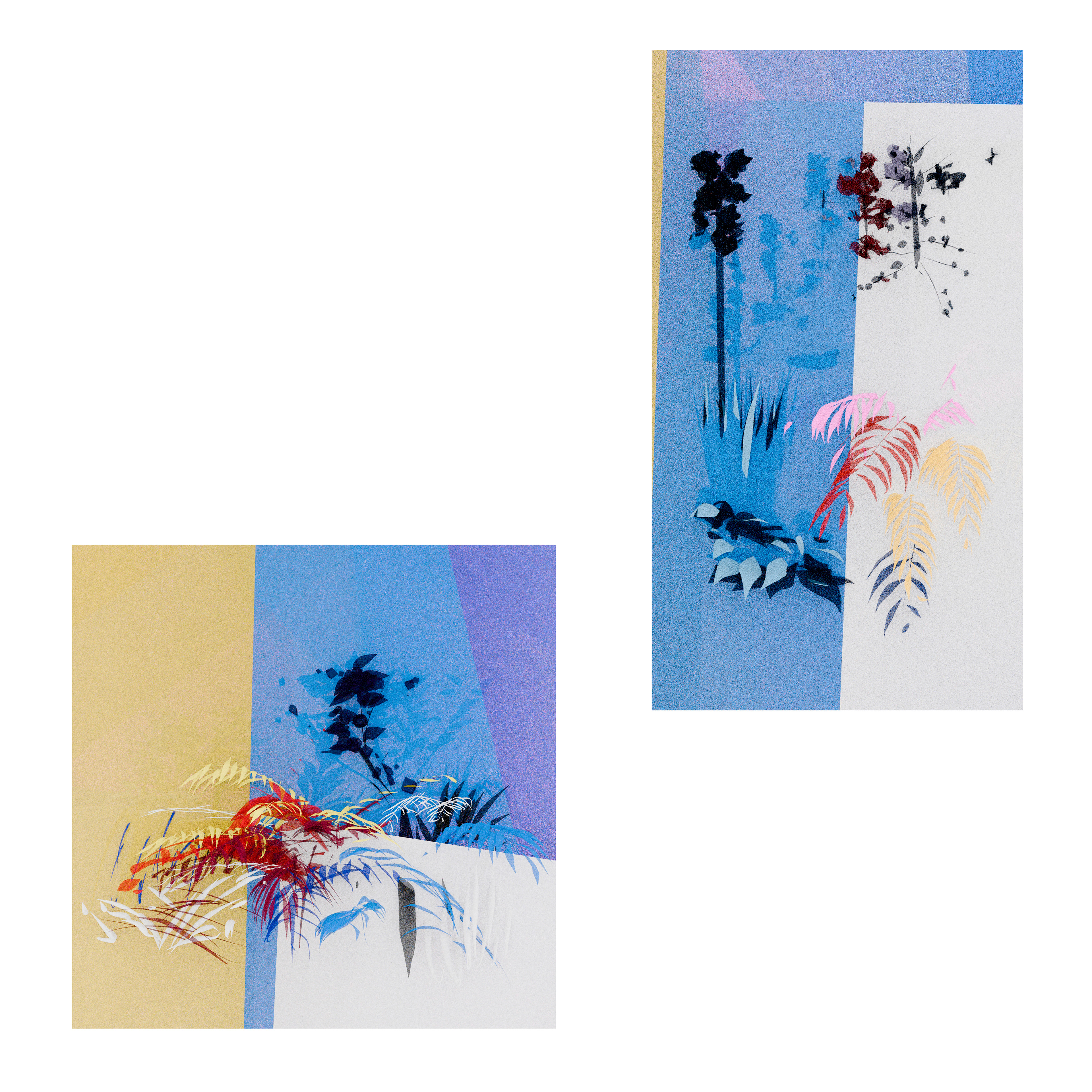
The landscape in transformation
The landscape has never been a static background in the history of humanity. It is a witness and reflection of our needs, desires and ways of inhabiting the world. In the beginning, human beings were part of the landscape, without being different from it. Nature was not something alien, but an environment with which we lived in a dynamic equilibrium. There was no idea of intervening in it, but rather of adapting to its rhythms and cycles.
With the arrival of agriculture, the landscape ceased to be just a refuge and became a territory. We began to divide it, to shape it according to our needs. Forests were transformed into fields of crops, rivers were redirected, and symbiosis with nature gave way to the domestication of the environment. What was once an untamed space began to respond to human logic.
The industrial revolution brought with it an even more radical transformation: the landscape was no longer just the stage for our existence, but a raw material that could be exploited, expanded and fragmented in the interests of progress. Cities were built, factories were erected, and concrete boundaries were established between the “natural” and the “artificial.” The landscape was, then, a space of control.
But now, in the digital age, the relationship with the landscape has taken an unexpected turn. We no longer just transform it physically, but we also transfer it to the virtual world. The landscape is not only the one we walk on, but the one we navigate, the one we project on screens, the one that exists on servers and data. We have gone from inhabiting nature to inhabiting the image of nature. The machine, at this point in history, not only interprets the landscape: it redefines it.
How do we relate to the landscape now when it is mediated by technology? Do we still feel its force, its presence, its essence, when we perceive it through pixels and algorithms? The transformation of the landscape is no longer just geographical or material, but perceptual. We are at a point where the natural and the digital can no longer be completely separated, and that forces us to rethink what we consider real.
The journey of the landscape: from the physical to the digital world and back
A landscape is never just a place: it is a construction, a mirror of the way we inhabit and understand it. Throughout history, the landscape has been a reflection of the time in which it has been observed. From the first cave paintings to the pictorial tradition of Romanticism, the representation of the landscape has been a form of appropriation and, at the same time, of contemplation.
Today, that journey continues, but with a new element: technology. We no longer just observe nature, but we filter it through screens, we reconfigure it into data, we simulate it in digital spaces. What was once a physical territory now expands into virtual dimensions, and the landscape becomes malleable, a field of experimentation without the restrictions of the material world.
In The Metamorphosis of the Landscape, the journey begins in the physical, in the real landscape, the one that persists in its inexhaustible abundance. But instead of capturing it directly on a canvas, the first thing I do is dissolve it in the digital. It is a translation, but also a reinterpretation. Virtual reality becomes a laboratory where nature is broken down into geometric shapes, into impossible colours, into structures that do not exist anywhere else but in that simulation space.
And yet, the journey does not end there. After its digital transformation, the landscape returns to the material through oil painting. I do not print the virtual result, but rather I observe it, study it and reinterpret it with my own hands. I do not seek fidelity to the digital image, but to understand what it means to bring it back to the material. In this transition, the landscape undergoes another metamorphosis: the texture of the brush, the resistance of the oil, the drying time, everything that is inherent to the physicality of the painting.
This process is not a simple back and forth between the digital and the physical. It is a cycle, a continuous transformation. Each medium brings something new to the landscape, distorts it, enriches it. In the virtual world, the landscape becomes weightless, abstract, malleable. In painting, it regains its weight, its presence, its time. And in this oscillation between worlds, the landscape ceases to be a static object and becomes an experience of transformation.
Ultimately, this journey is not just about the landscape, but about our relationship with the image, with memory, with the real and the simulated. How much of what we perceive as nature is still nature and how much is already a technological construction?
What the machine reveals
Technology does not just transform the landscape; it reconfigures it, dissects it, and reconstructs it into new forms of existence. It is not just a tool to replicate reality, but a lens that forces us to see it differently.
When the landscape enters the machine, it is subject to its rules. Its shapes are simplified into geometries, its texture becomes data, its light into pixels. What was once an unfathomable expanse of nature is translated into a set of programmable parameters. But in this apparent reduction there is also a discovery: the machine, in its attempt to imitate, reveals what is impossible to replicate.
In The Metamorphosis of the Landscape, this process is central. By transferring the natural to the digital environment, I am not looking for a copy, but a transformation. What interests me is not fidelity to the original, but what technology adds, what it distorts, what it illuminates. In virtual reality, the landscape is broken down into brushstrokes that do not exist outside that space: floating strokes of light, impossible structures, colours that behave like matter without being so.
The machine not only allows me to create, but also confronts me with the limits of perception. In its inorganic logic, it forces me to question what we mean by nature. Is something that has never existed outside a digital environment still landscape? Or is the nature of landscape always that of being an interpretation, an image filtered by our gaze?
The fascinating thing about this process is that, in its attempt to translate reality, technology generates a new one. It is not nature as we know it, but a version that can only exist in its own language. And when I take that digital image and bring it back to oil, I am not trying to restore what was lost in the transition, but to amplify what was discovered along the way. Painting is not a correction of the machine, but a conversation with it.
The landscape is no longer just what is outside of us, but also what technology allows us to see. And in that revelation, we discover that each image is ultimately a question: do we see nature as it really is, or as we are able to see it?
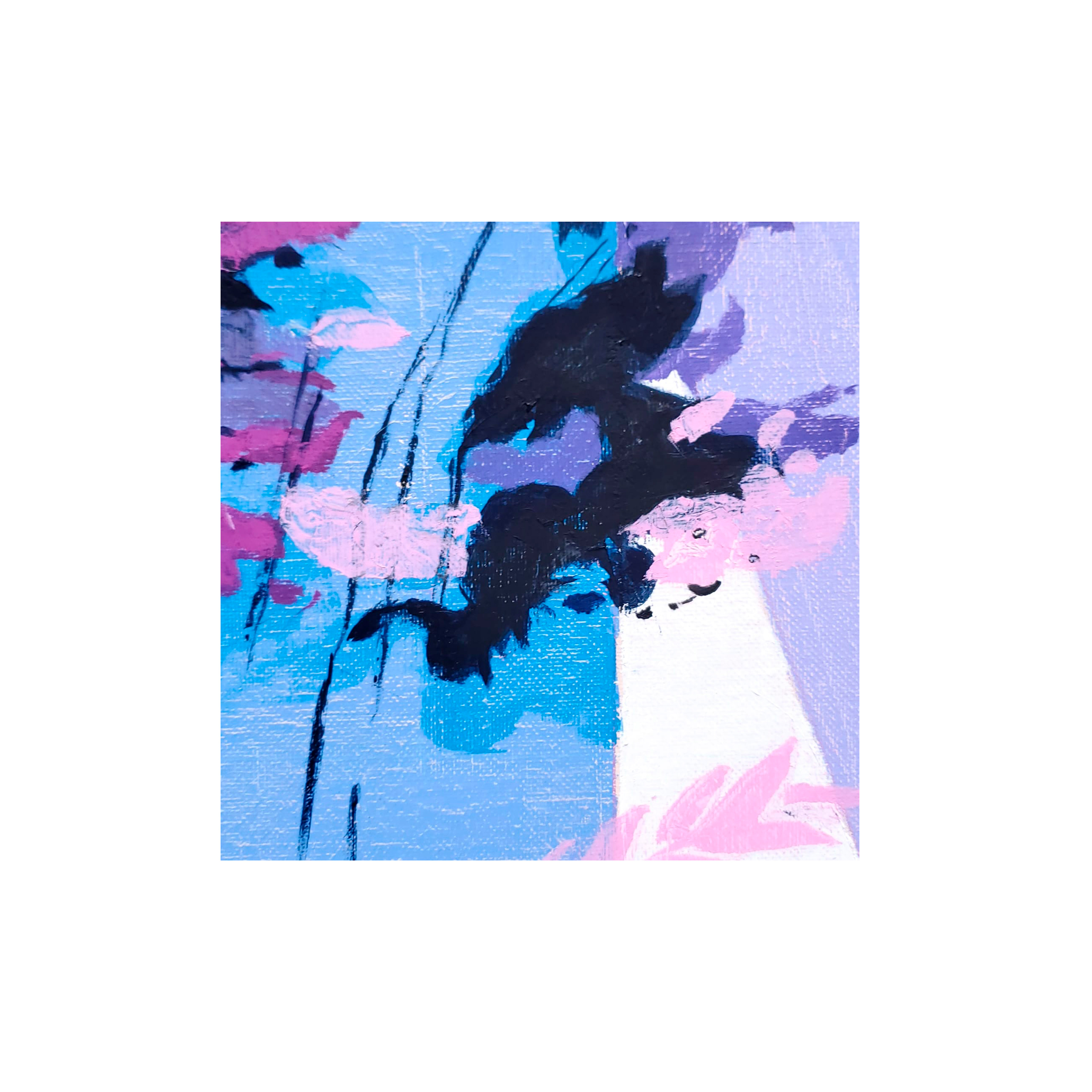
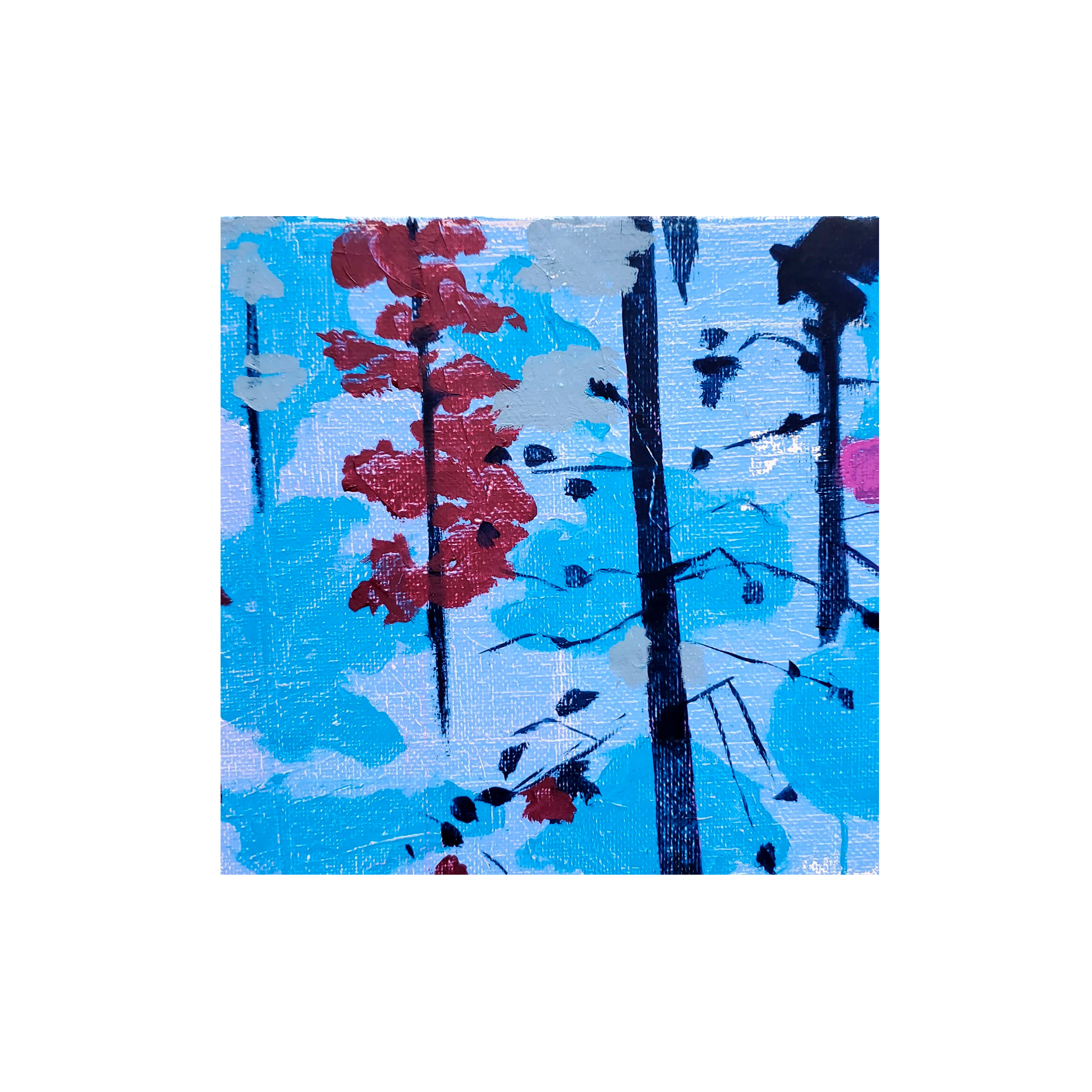
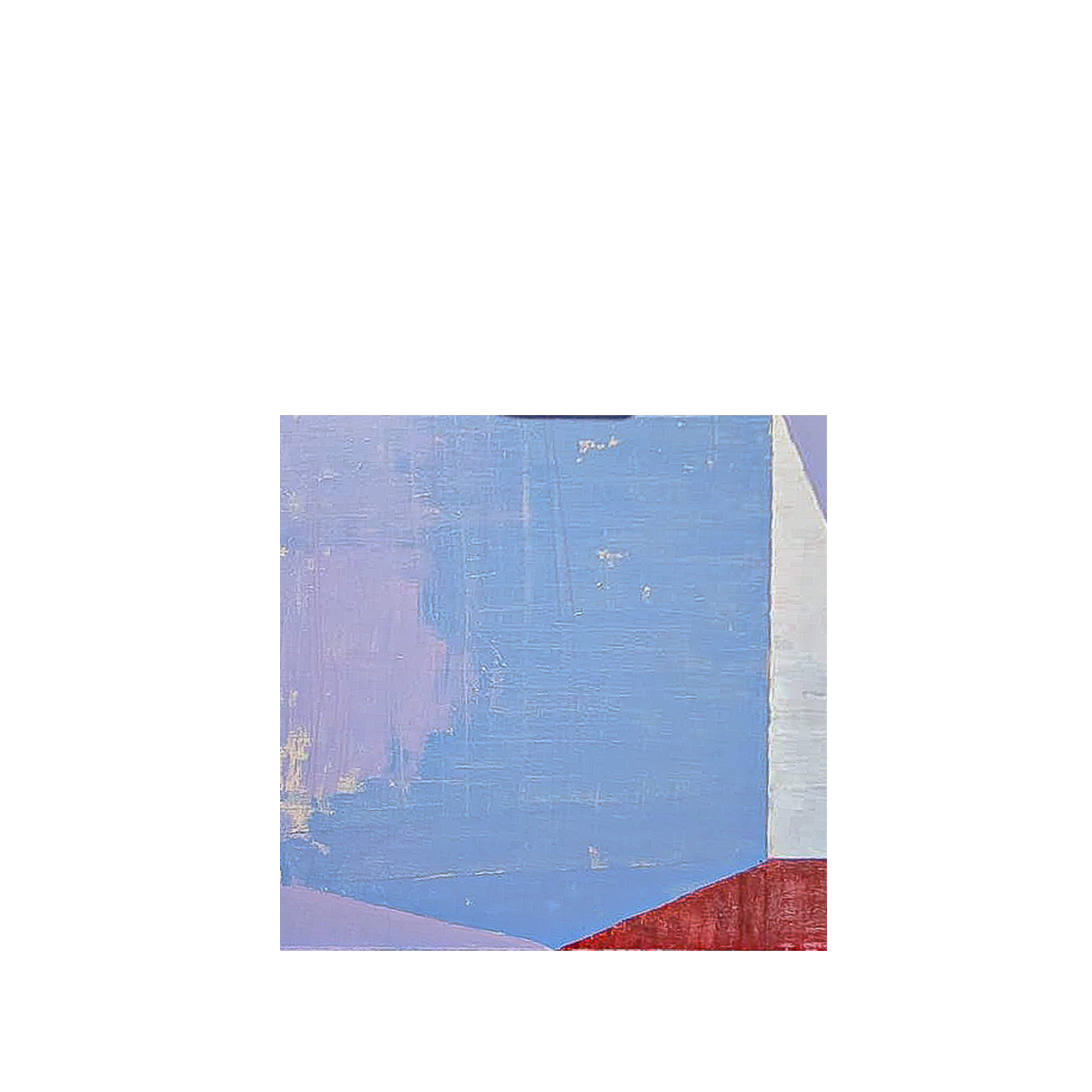
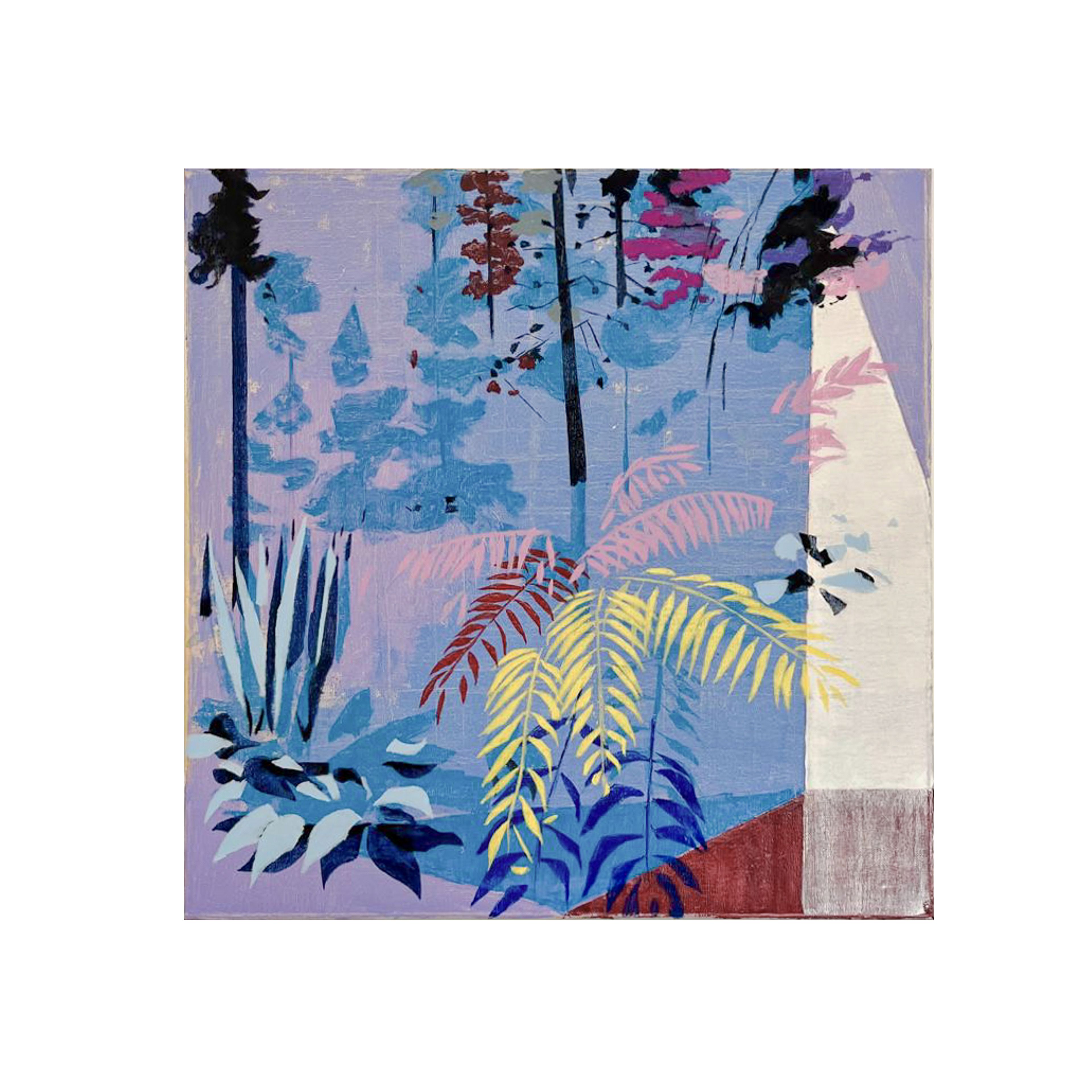
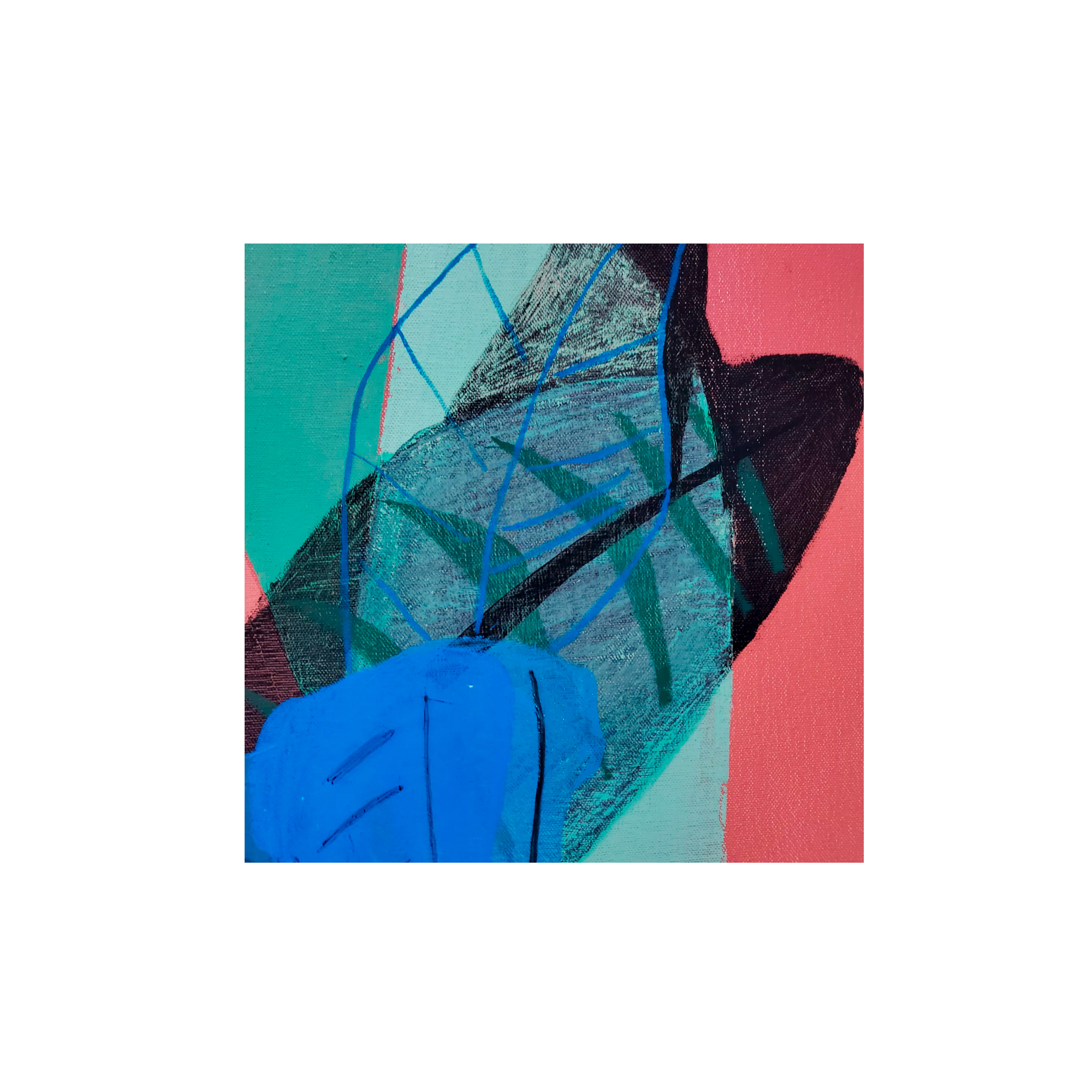
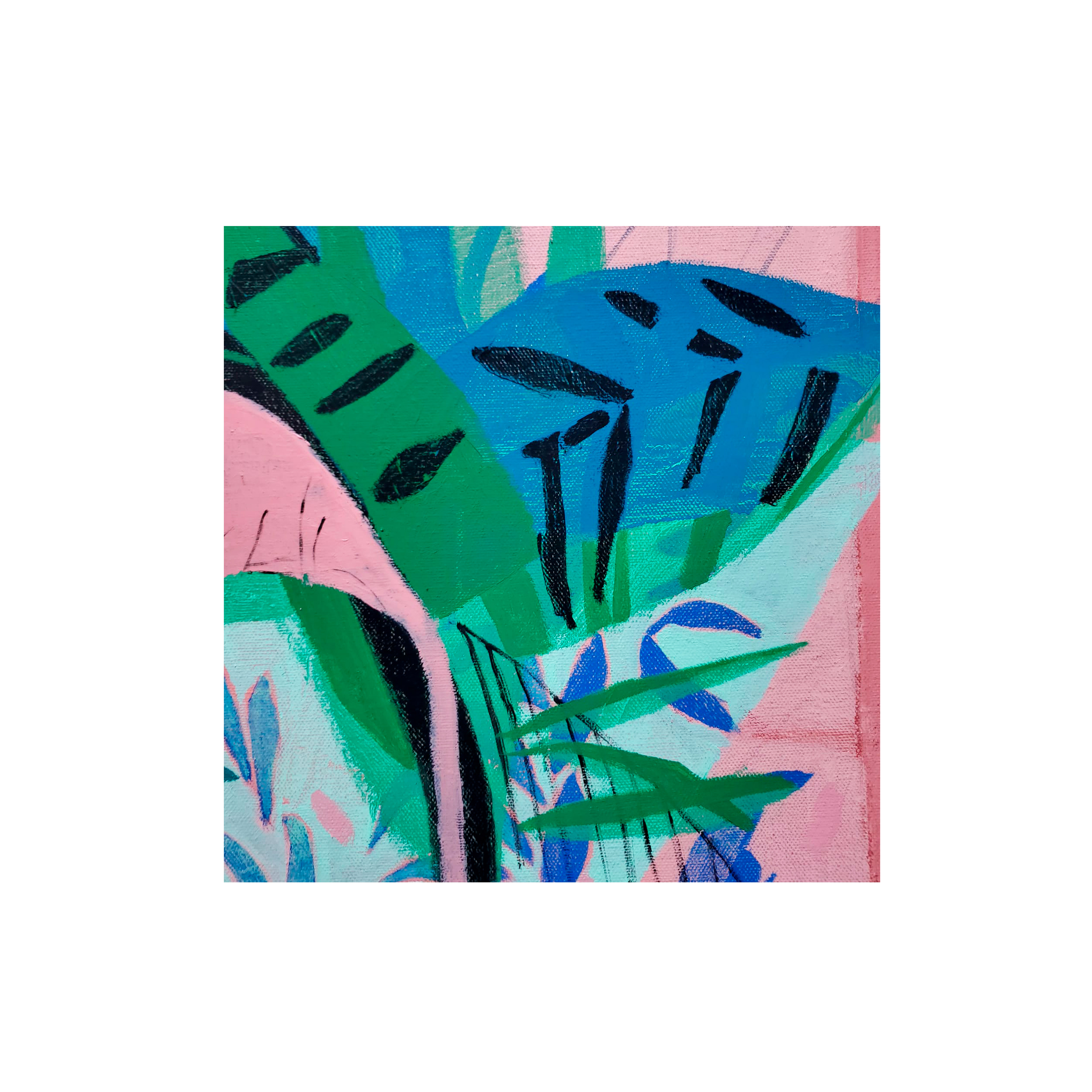
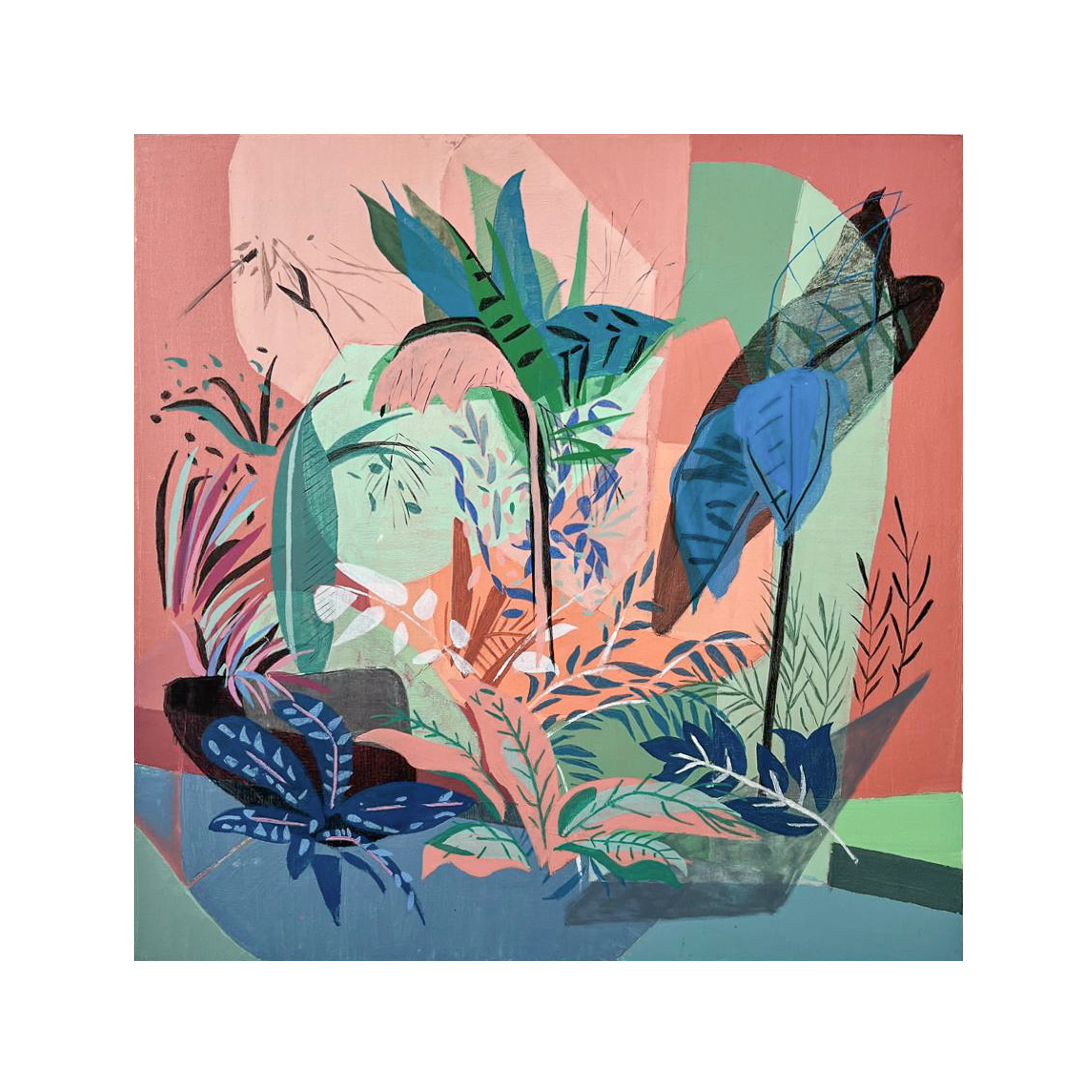
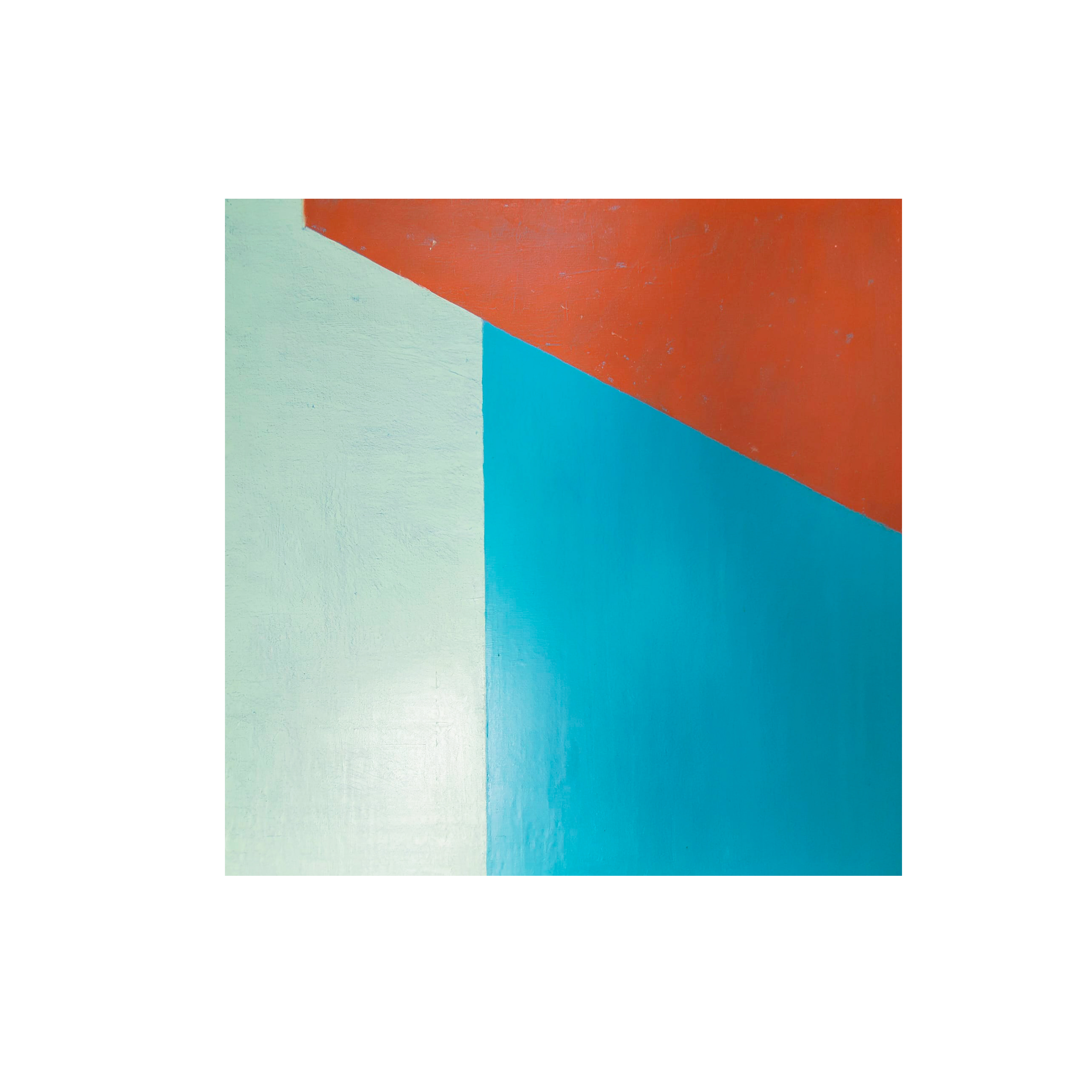
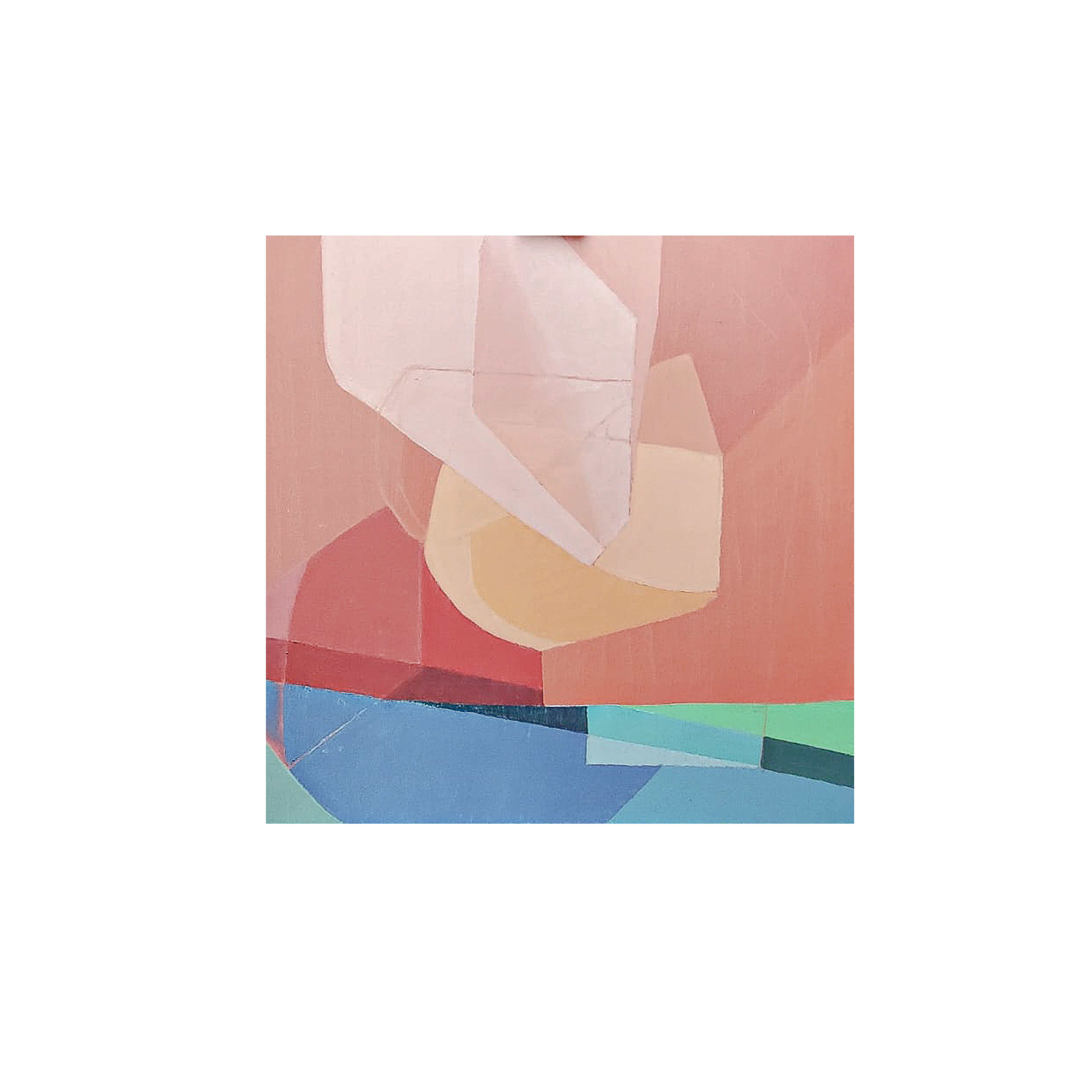
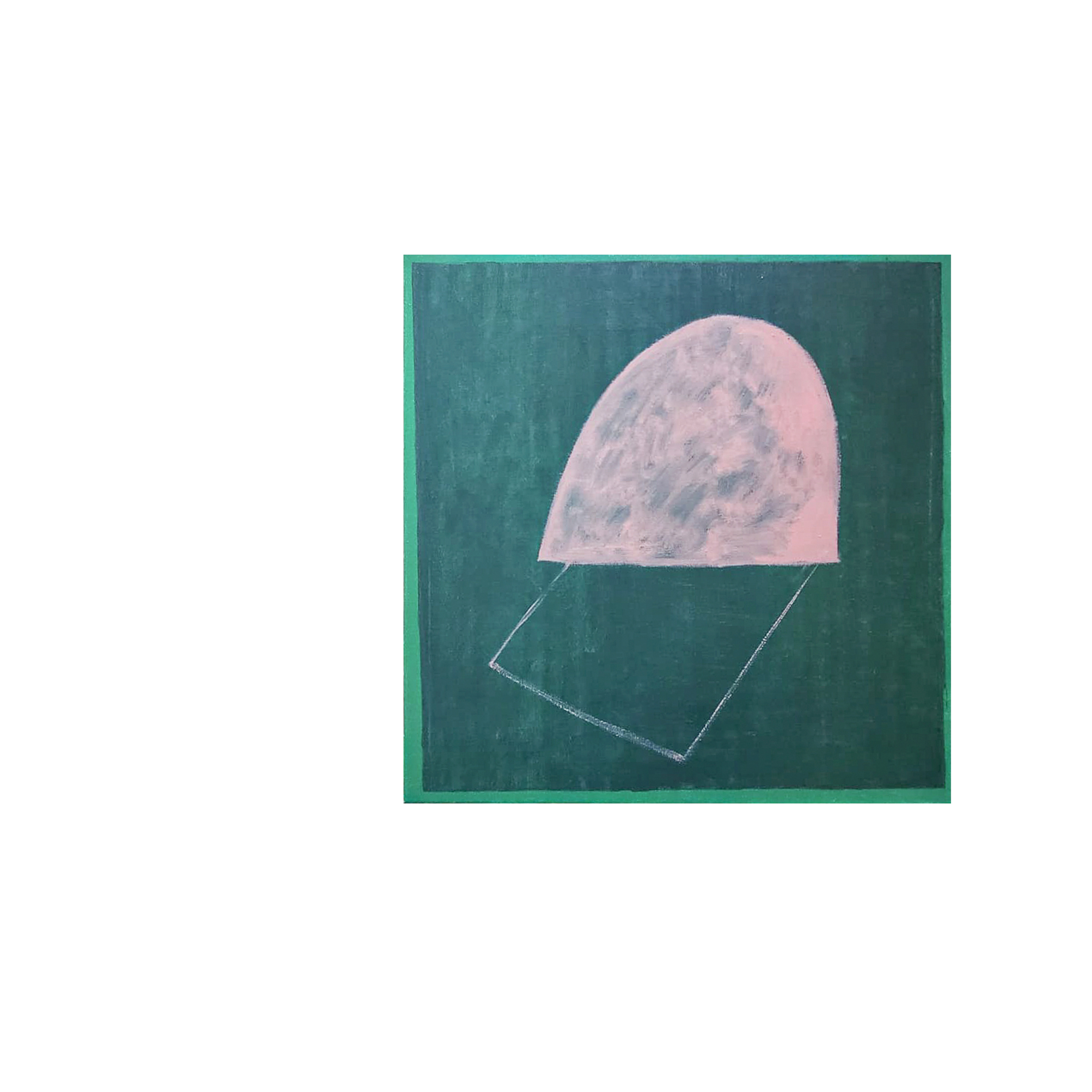
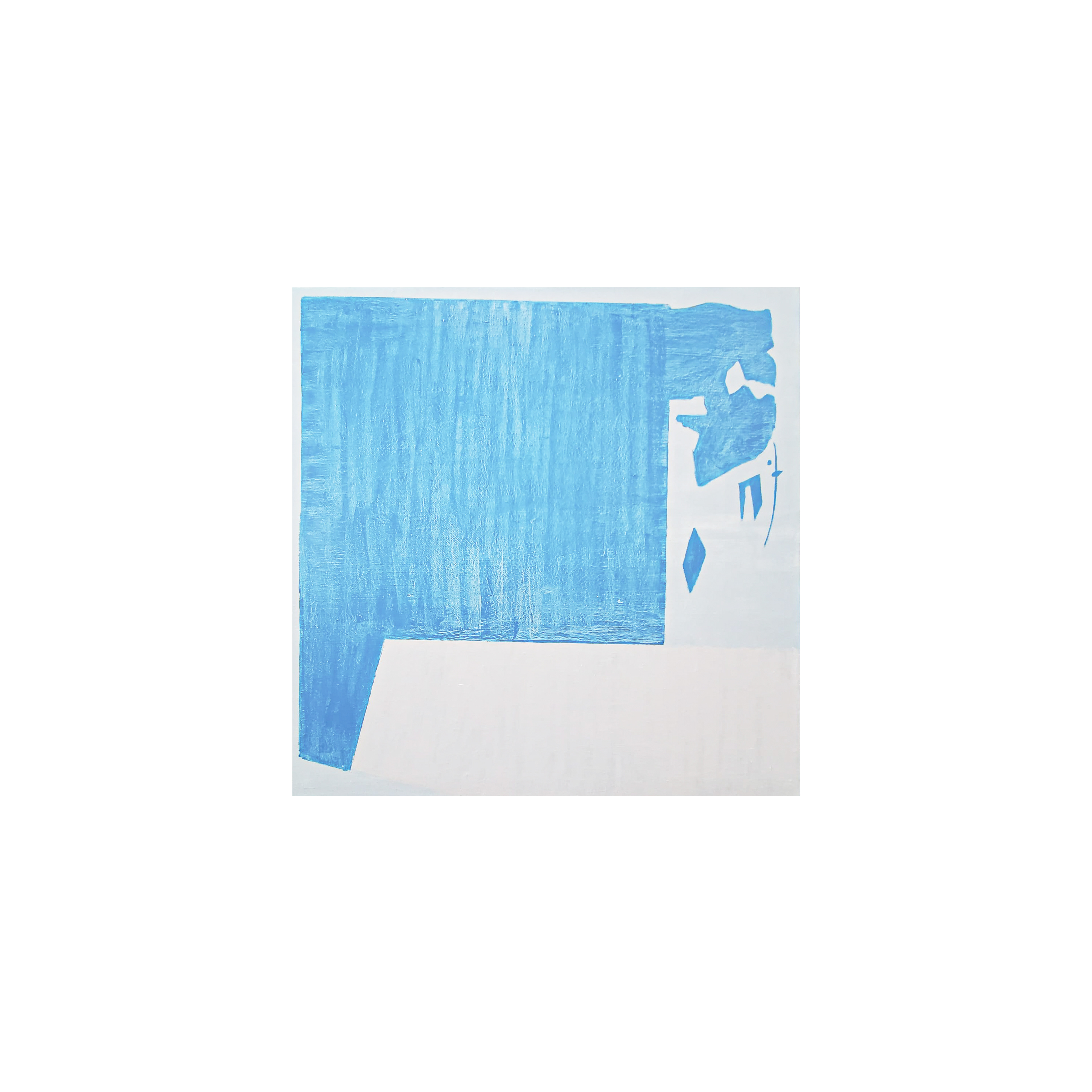
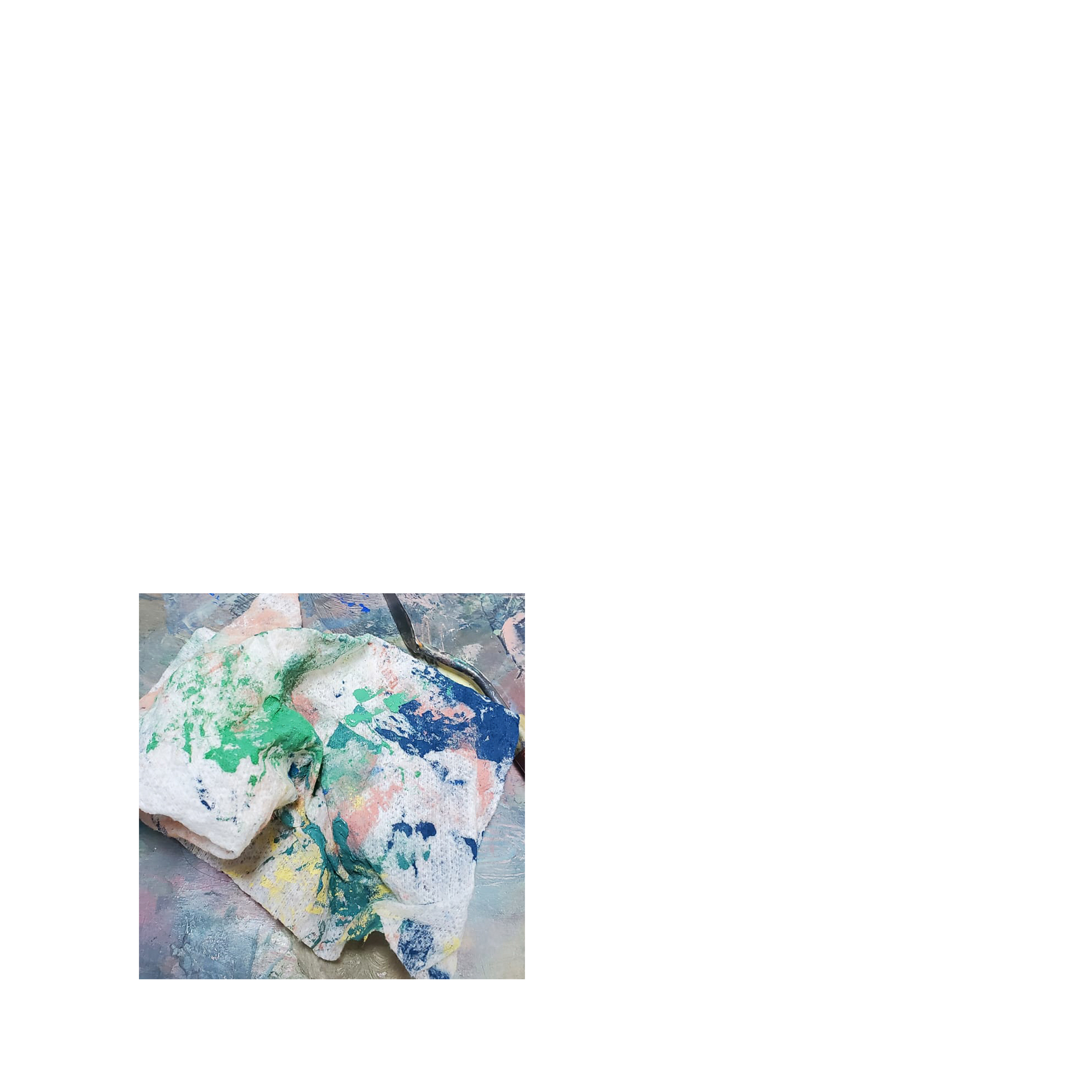
Matter and memory
Why oil remains the end point of the process and what it means to return the digital landscape to the physical world.
The machine generates, transforms and reinterprets. But in its logic of immediacy, there is something that escapes it: the trace of time.
In The Metamorphosis of Landscape, each image goes through multiple states before reaching its final destination. From nature captured in pixels to the floating brushstroke in virtual reality, the landscape undergoes a series of mutations. But the process does not end there. There is always a return, a longing for matter.
Oil is the end point because it is the only one that has body, weight, resistance. While the digital is infinitely editable, painting is an irreversible decision. Each stroke is a residue of the moment in which it was made. It cannot be undone with a keyboard shortcut, one cannot go back without leaving a trace.
Painting is an act of memory. It is the moment when the digital landscape stops being light and becomes substance. But in this return, there is no absolute fidelity: the oil does not seek to imitate the digital image, but to absorb what was discovered in it. The color, the composition, the artificial geometry of virtual reality are translated into the texture and opacity of the painting. It is not about restoring the original image, but about reinterpreting it from the tactile experience.
In this sense, painting is also a form of testimony. While technology allows us to erase, redo and optimize, oil preserves the history of its own creation. On the surface of the canvas remain the decisions, the corrections, the marks of the process. What was once a set of data is now matter, and in its texture is inscribed the time it took to make it.
The landscape, in the end, is not only what we see, but what we remember of it. And in that memory, matter is essential.
The Continuous Metamorphosis
The landscape has never been a fixed entity, but rather an expression of our relationship with the world. Throughout history, we have shaped it, domesticated it, fragmented it, and, more recently, digitized it. Today, in an era where the virtual and the tangible intertwine, we find ourselves faced with a new form of landscape, one that is not only observed, but experienced through technology.
The Metamorphosis of the Landscape does not seek to resolve this transformation, but to inhabit it. It delves into the process, into the constant transition between the natural, the digital, and the pictorial. It is not a simple translation from one medium to another, but a cycle of interpretations and reconfigurations, where each phase reveals something different about our perception of the environment.
Technology, with its ability to simulate and fragment reality, allows us to see what would otherwise remain invisible. It confronts us with questions about the essence of the landscape, about how much of what we see is a construction of our gaze and how much is a truth inherent to the world. It invites us to reconsider the very nature of representation and memory.
And yet, the return to matter is unavoidable. Oil, with its weight and resistance, is the ultimate testimony of the journey. In its brushstrokes, time, intention, and the history of the process are inscribed. If technology gives us the possibility of undoing and rebuilding infinitely, painting forces us to accept the irreversible. In this tension between digital fluidity and the solidity of matter, the landscape finds its new voice.
In the end, the landscape is not only what we observe, but the reflection of our way of inhabiting and understanding it. Like a mirror, it returns to us our own transformation. In each iteration, in each translation between worlds, the landscape is rewritten, and with it, our perception of what it means to be part of it.
Metamorphosis is not a point of arrival, but a perpetual state of exploration. A cycle that, like every landscape, continues to breathe over time.